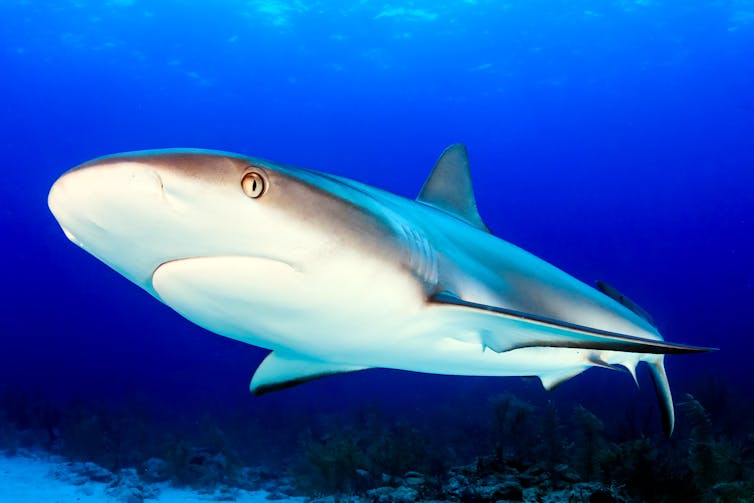

Climate change is altering the production of info-carrying chemicals such as pheromones



What do the following changes have in common?
Some ant species are struggling to follow trails, as warming temperatures cause a certain pheromone they use to communicate to decay. The water fleas Daphnia are finding it harder to evade predators as CO₂ levels rise in the water. And in coral reefs, the colourful and pretty damselfish are losing their ability to learn who their predators are.
All have been caused in some way by arguably the biggest change of all: climate change.
My colleagues and I have led research which has shown that climate change is also changing chemical communication in marine, freshwater and land-based species, with far-reaching implications for our planet’s future and human wellbeing.
Chemical communication plays an essential role in well-functioning ecosystems. This “language of life” regulates interactions between organisms and is essential to the environment, and ultimately, all life on Earth.
Interactions through so-called “infochemicals” are perhaps the oldest and most widespread form of communication on the planet. Infochemicals provide the basis for the vast majority of ecological processes across the tree of life, in both land and water, by serving as cues or signals that are present on the surface of organisms themselves or released into the surrounding environment.
They also help shape natural ecosystems by maintaining their equilibrium and, in doing so, support the provision of many things that are of great importance to humans, including food and clean water.
Infochemicals influence a broad range of functions and behaviour such as the relationship between predator and prey. For example, sharks use these chemicals to “sniff” out their prey over mindboggling distances. Bear in mind that any chemical you can smell is probably an infochemical, often intended for a different species. For instance the smell of a pine forest – that is, the presence of certain chemicals – signals something different to a human, a bear or an ant.

These chemicals can affect foraging and feeding too. For example, infochemicals are released by some plant species to attract pollinators but repel those that may cause harm. In some cases, a plant under attack may even tell its neighbours of impending doom so they can respond accordingly.
Infochemicals can influence habitat selection. They’re how barnacle larvae select a suitable surface on which to attach, for example. And infochemicals are also used by species to recognise potential mates and boost their chances of reproducing. For example, some bat species can “sniff” out a mate with the greatest genetic diversity.
But climate change is altering the production of these info-carrying chemicals such as pheromones. This is having a major impact on a wide variety of species. Scientific research has shown that alterations in temperature, carbon dioxide and pH levels – all part of climate change – can affect every single aspect of the fundamental processes that organisms use to communicate with each other.
An example of this is a laboratory experiment that showed how climate change caused a reduction in anti-predator behaviour in some fish species by decreasing their anxiety towards potential predators. Many fish release certain chemicals when they are harmed by a predator or are otherwise in danger. And their fellow fish use the presence of these chemicals, detected through smell, as a warning. But scientists found that when more CO₂ is absorbed in the water and the pH level is reduced, the most commonly researched alarm cue (hypoxanthine-3-N-oxide) is irreversibly changed and fish find it harder to detect.
Climate change is not just affecting individual species. A growing number of studies suggest that climate change-associated stressors which modify these chemical interactions are causing info-disruption across whole ecosystems.
However, our understanding of the underlying mechanisms remains scarce. As a next step, colleagues and I are working on how climate change may affect the chemically mediated relationship (or communication) between disease-causing pathogens and the animals that host them. If global warming causes a communication breakdown, we ultimately want to know how that will impact us humans.

Don’t have time to read about climate change as much as you’d like?
Get a weekly roundup in your inbox instead. Every Wednesday, The Conversation’s environment editor writes Imagine, a short email that goes a little deeper into just one climate issue. Join the 20,000+ readers who’ve subscribed so far.![]()
Mahasweta Saha, Marine Chemical Ecologist, Plymouth Marine Laboratory
This article is republished from The Conversation under a Creative Commons license. Read the original article.
We are a voice to you; you have been a support to us. Together we build journalism that is independent, credible and fearless. You can further help us by making a donation. This will mean a lot for our ability to bring you news, perspectives and analysis from the ground so that we can make change together.

Comments are moderated and will be published only after the site moderator’s approval. Please use a genuine email ID and provide your name. Selected comments may also be used in the ‘Letters’ section of the Down To Earth print edition.